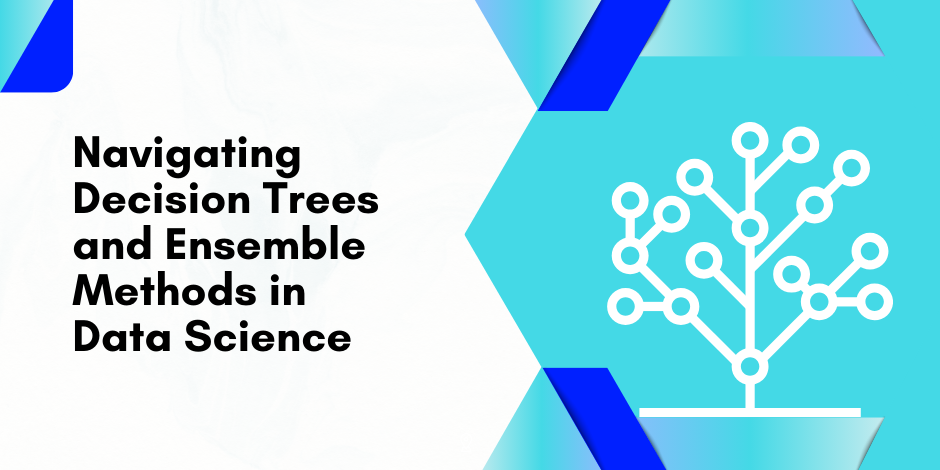Navigating Decision Trees and Ensemble Methods in Data Science

Stay Informed With Our Weekly Newsletter
Receive crucial updates on the ever-evolving landscape of technology and innovation.
Decision trees and ensemble methods are fundamental components of data science.
They offer powerful tools for prediction, classification, and understanding complex data structures.
This comprehensive guide will navigate you through the intricacies of decision trees and ensemble methods, their applications, and how to optimise their use in your data science projects.
Understanding decision trees in data science

Decision trees and ensemble methods are at the heart of many data science projects.
Decision trees are the flowchart-like structures that model decisions and their possible consequences, including chance event outcomes, resource costs, and utility.
They are a way to visually and explicitly represent decisions and decision making.
Decision trees are particularly useful in data analysis for machine learning.
They provide a practical approach to identifying payoffs and making informed decisions.
In the realm of data science, decision trees are used for both classification and regression tasks.
Building decision trees
Building a decision tree involves multiple steps, starting with the selection of attributes to test at each node.
The most common method for this is the greedy approach, where the attribute that best divides the dataset is chosen.
This division is often based on information gain or Gini impurity.
Once an attribute is selected, the dataset is partitioned accordingly, creating branches under the node.
This process is repeated for each derived subset in a recursive manner.
The recursion is completed when either the subset at a node has all the same value of the target variable, or when splitting no longer adds value to the predictions.
Advantages and disadvantages of decision trees
Decision trees offer several advantages.
They are simple to understand and interpret, making them a great tool for visualising data.
They can handle both numerical and categorical data, and are able to handle multi-output problems.
Furthermore, decision trees require relatively little data preparation.
However, decision trees are not without their disadvantages.
They can easily overfit or underfit data, leading to poor prediction performance.
They can also be unstable, as small variations in data can result in a completely different tree being generated.
Lastly, decision tree learners can create biassed trees if some classes dominate.
Navigating ensemble methods in data science

Both decision trees and ensemble methods are a crucial part of data science, but ensemble methods in particular, offer a solution to the instability of decision trees.
They operate by creating multiple models and then combining them to produce improved results.
This process helps to reduce overfitting, improve robustness, and boost the overall performance of models.
Ensemble methods can be divided into two main types: sequential ensemble methods, where base learners are generated sequentially (e.g. AdaBoost), and parallel ensemble methods, where base learners are generated in parallel (e.g. Random Forest).
The basic motivation of sequential methods is to exploit the dependence between the base learners, while parallel methods aim to exploit independence between the base learners to achieve error reduction.
Exploring ensemble methods: bagging and boosting
Bagging and boosting are two popular ensemble methods in data science.
Bagging, or bootstrap aggregating, involves creating multiple subsets of the original data, training a model on each, and then combining the output.
This method effectively reduces variance and prevents overfitting.
Boosting, on the other hand, is a sequential process where each model attempts to correct the mistakes of the previous one.
Models are weighted based on their accuracy and the sum of these weights determines the final prediction.
Boosting is powerful, but it can lead to overfitting if not carefully managed.
Random forests: an ensemble method masterclass
Random forests are a classic example of an ensemble method, combining multiple decision trees to solve complex problems.
By averaging the results of multiple decision trees, random forests help to overcome the overfitting problem common with single decision trees.
Random forests work by creating a multitude of decision trees at training time and outputting the class that is the mode of the classes or mean prediction of the individual trees.
They are robust against overfitting, can handle large datasets with high dimensionality, and maintain accuracy even when a large proportion of the data are missing.
Applying decision trees and ensemble methods in data science

Decision trees and ensemble methods find application in various data science tasks.
From healthcare and finance to e-commerce and social media analytics, these methods are used to drive decision making and predictive modelling.
For instance, in healthcare, decision trees can be used to predict patient outcomes based on various factors such as age, gender, and medical history.
Ensemble methods, like random forests, can be used to improve the accuracy of these predictions by combining the outputs of multiple decision trees.
In finance, decision trees can be used to model the decisions of investors, while ensemble methods can be used to predict market trends with higher accuracy.
In e-commerce, decision trees and ensemble methods can be used to predict customer behaviour and personalise the shopping experience.
Conclusion
Navigating decision trees and ensemble methods in data science can seem complex, but with a solid understanding of their principles and applications, they can be powerful tools in your data science toolkit.
Whether you’re predicting customer behaviour, modelling financial trends, or diagnosing medical conditions, these methods offer robust and reliable solutions.
Remember, the key to successful data science is not just knowing the right methods but also knowing how to use them effectively.
Want to learn more about Decision trees and ensemble methods? Download a copy of the Institute of Data’s comprehensive Data Science & AI program outline for free.
Alternatively, we invite you to schedule a complimentary career consultation with a member of our team to discuss the program in more detail.




